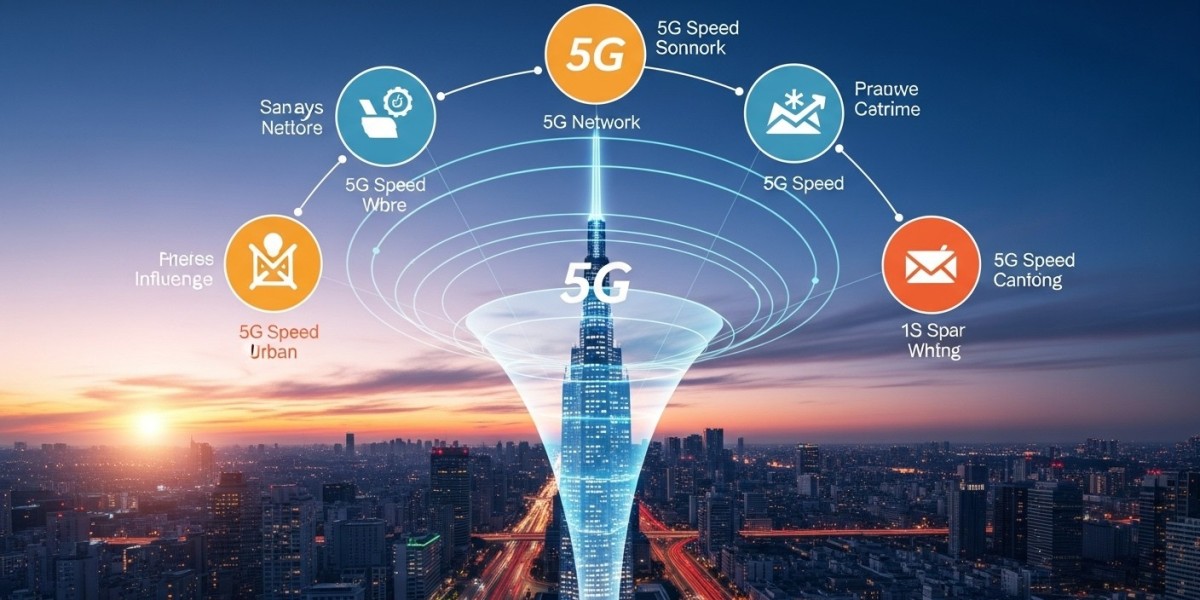The main factors influencing 5G speed in urban areas are network density, frequency band allocation, infrastructure deployment, signal interference, and user congestion. Simply put, the more densely populated the city and the more advanced its infrastructure, the faster and more reliable the 5G performance. Buildings, weather, and even the number of connected devices can also impact overall 5G network performance.
As cities expand and digital demands rise, 5G technology is transforming the way people and businesses connect, stream, and communicate. With Australia rapidly adopting next-generation connectivity, companies like Quantacom, a leading mobile telecom provider in the country, are at the forefront of making ultra-fast, low-latency mobile experiences a reality.
The Foundation of 5G Speed
To understand 5G speed, we first need to break down what makes it so powerful. Unlike 4G, which relies on large cell towers covering wide areas, 5G networks use a combination of small cells, massive MIMO (Multiple Input, Multiple Output), and beamforming technology. These innovations enable higher data rates, better signal coverage, and reduced network congestion, especially in urban areas.
The Role of Frequency Bands
5G operates across three main frequency bands: low-band, mid-band, and high-band (mmWave).
Low-band 5G offers wide coverage with moderate speeds.
Mid-band 5G delivers a balance between coverage and performance, ideal for most urban users.
High-band 5G (millimeter wave) provides ultra-fast speeds but has limited range, requiring dense cell deployments.
Telecom providers like Quantacom strategically combine these bands to ensure optimal performance and consistent connectivity, even in busy metropolitan environments.
How 5G Speed Impacts Everyday Life
The benefits of 5G speed go beyond faster downloads. It revolutionizes how industries, consumers, and devices interact.
For Consumers
Streaming 4K videos, gaming online, or video conferencing becomes almost seamless. Lag and buffering are practically eliminated, thanks to low latency and high throughput. Users can experience mobile internet speeds that rival fibre broadband connections.
For Businesses
5G technology empowers industries to embrace automation, IoT (Internet of Things), and real-time analytics. From smart manufacturing to autonomous vehicles, the speed and reliability of 5G connectivity drive efficiency and innovation.
Quantacom helps Australian businesses adopt these technologies with reliable mobile and broadband solutions designed to meet evolving digital needs.
Technical Factors Influencing 5G Speed
Several technical and environmental elements determine the true speed of 5G networks:
Network Infrastructure: The density of 5G base stations directly affects coverage and performance. Urban areas with extensive infrastructure deliver the highest speeds.
Spectrum Availability: More spectrum means greater capacity. Governments and telecom companies allocate frequency ranges to optimize speed and stability.
Backhaul Capacity: The connection between cell towers and the core network must handle high data volumes. Fibre-backed systems ensure maximum efficiency.
Device Compatibility: Not all devices are created equal. Modern smartphones with advanced antennas can access higher frequency bands for better results.
Environmental Factors: Buildings, trees, and weather can all impact signal propagation, reducing speed in certain locations.
5G Speed in Australia
Australia is quickly becoming a hub for 5G innovation, with cities like Sydney, Melbourne, and Perth leading adoption. Providers such as Quantacom are expanding their 5G coverage networks to ensure both businesses and individuals enjoy faster, more reliable mobile experiences.
As rural connectivity improves, regional communities are also beginning to access 5G benefits, bringing high-speed internet to previously underserved areas.
The Future of 5G Technology
The journey of 5G has only just begun. Future developments like 5G standalone networks, network slicing, and AI-driven optimization will push connectivity further. These advancements will enable smart cities, remote healthcare, and cloud gaming at an unprecedented scale.
With Quantacom’s expertise in next-generation telecommunications, Australians can expect to stay ahead of the digital curve. The company continues to invest in advanced mobile infrastructure, ensuring users experience the full potential of 5G as it evolves.
Conclusion
5G is more than just faster internet, it’s the foundation for a connected future. The factors that influence 5G speed, such as network density, spectrum management, and device capability, determine how efficiently data moves in our digital world. As Quantacom continues to expand its 5G infrastructure across Australia, the promise of seamless, lightning-fast connectivity becomes a reality for both consumers and businesses.
FAQs
1. What determines the real-world speed of 5G?
The actual 5G speed depends on factors like signal strength, frequency band, device capability, and network load. Urban areas with better infrastructure usually experience faster speeds.
2. How fast is 5G compared to 4G?
On average, 5G networks can be up to ten times faster than 4G, offering speeds that can exceed one gigabit per second in optimal conditions.
3. Does weather affect 5G performance?
Yes, environmental conditions such as heavy rain or dense buildings can slightly reduce 5G signal strength, especially for high-band frequencies.
4. When will 5G be available everywhere in Australia?
Coverage is expanding rapidly. Providers like Quantacom are continuously deploying new base stations to extend reliable 5G access across metropolitan and regional areas.
5. What can users do to get the best 5G speed?
Using a compatible 5G device, staying within coverage zones, and maintaining clear line-of-sight to cell towers can enhance performance significantly.







